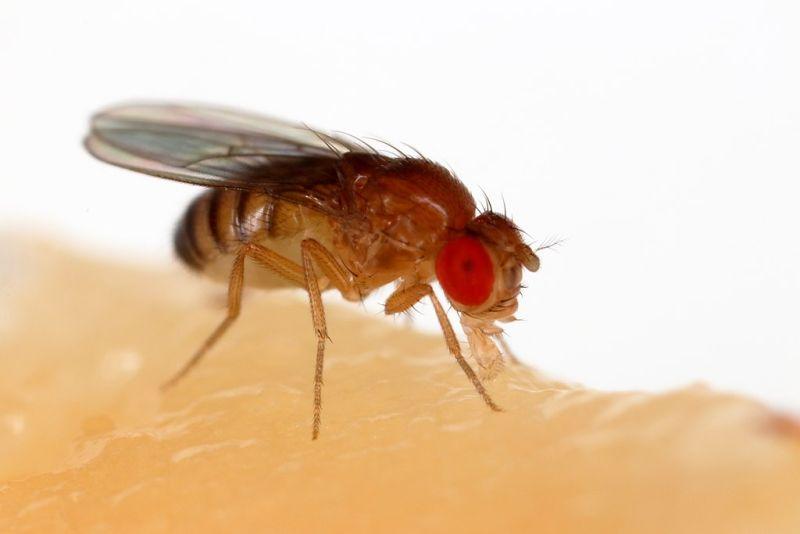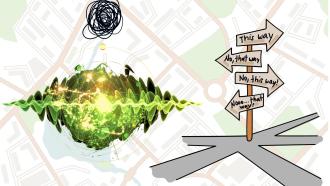
What makes you move? Though this is a philosophical question, science tells us that most organisms move throughout their life due to many factors. They could move in search of food or a mate, or towards new surroundings and habitats to live in. Often, their movement is influenced by the existing numbers of their own kind and affects their distribution in an area. This phenomenon is called ‘density-dependent dispersal’. But, what roles do different environmental factors play in this dispersal? In a recent study, scientists from the Indian Institutes of Science Education and Research (IISER), Pune, have identified factors that affect the dispersal patterns of fruit flies (Drosophila melanogaster).
"One way in which species cope with environmental stress, like a drought or climate change, is by moving away to a more suitable habitat. This process of movement is not only shaped by the various stresses that the organisms face, but also by their physiology", explains Prof. Sutirth Dey, an Associate Professor at IISER Pune, and an author of the study.
The researchers of this study, published in the ecological journal, Oikos, have tried to understand the consistency of the dispersal patterns of species across different environments, as well as how males and females react differently to crowding or increase of population in the area that they reside in. The study was supported by funding from Science and Engineering Research Board (SERB).
Previous studies have found that the pre-dispersal context, i.e. the environment an individual faces before dispersal, can affect its migration pattern. But its effects on density-dependent dispersal are poorly understood, and therefore an investigation was carried out to see how pre-dispersal context could alter the dispersal of the fruit flies. It is also known that pre-dispersal context can generate a different impact on males and females, which prompted the researchers of this study to find out whether the dispersal rate was affected by the sex of the individual and presence of the opposite gender.
The scientists carried out three experiments in their lab using about 34,000 fruit flies. They introduced the fruit flies in a conical flask and allowed them to disperse for 4 hours into a transparent plastic tube that was attached to a plastic bottle. The plastic bottle served as the destination for the flies, and it was replaced after every 30 minutes to record the number and the sex of the fruit flies that were collected in the bottle.
The first and second experiments were performed to record the proportion of flies that left the source, also called the dispersal propensity, using two types of groups—one where the number of individuals before dispersal in a group varied, and the other where it was constant. In the third experiment, they separated the males and the females to calculate the dispersal propensity and to observe the dispersal behaviour when the opposite sex was missing. Statistical analysis was carried out to determine if the dispersal was sex-biased.
The results of the first two experiments showed that the dispersal of the fruit flies decreased with an increase in their population size. The researchers observed this phenomenon for both sexes. Also, the female fruit flies were found to be less likely to migrate as compared to their male counterparts, and perhaps are more likely to become victims of overcrowding. Overall, the results showed that the sex of the fruit fly could affect its dispersal pattern.
The researchers also observed a unique phenomenon from the third experiment—there was no density-dependent dispersal at all! Since the sexes were segregated, the scientists established that the presence of the other sex was necessary to enable density-dependent dispersal.
What do all these results mean to the field of ecology?
"Our findings highlight that a detailed understanding of the local environment is necessary before dispersal data from field studies are adopted for modelling or conservation applications. Because over/under crowding of habitats is a commonly faced problem during conservation management, the response of species (including movement) to this issue needs significant attention", says Dr. Dey.
His team is currently trying to examine dispersal patterns in depth and understand the evolution of traits favourable for movement in organisms.






